Monsoon on Malabar Hill
In Bahram Modi’s time, Malabar Hill (with Walkeshwar) was an island, separated from Colaba by a broad channel.
Looking in the direction of Cuffe Parade, Colaba and the long-ago site of the Mistrie mansion on the now-vanished Apollo Street, I saw this:
The little boat-harbour in the foreground is adjacent to Machimar Nagar where the terrorists landed on 26th November, (the room from which the picture was taken was on the 34th floor of one the attacked buildings, the Trident Hotel).
It was in that room that I spoke with journalists Bijoy Venugopal and Regi John
Bijoy wrote later to say:
Regi John is a Special Correspondent of the Financial Chronicle.
He told me that two professors at IIT Mumbai had written a paper on dolphins and the The Hungry Tide. I was glad to learn that one of them, Prof. Milind Malshe, is an accomplished exponent of Hindustani classical vocal music. Later Regi sent me the article which is called ‘Chronotopes of Places and Non-Places; Ecopoetics of Amitav Ghosh’s The Hungry Tide‘ (Asiatic, Vol 4, No 2., Dec 2010).
And it was there too that Shreya Badola of DNA
 said to me, memorably: ‘When my editor gave me River of Smoke I was so not expecting to read the book, just going by the looks of it. But once I started I couldn’t put it down.’
said to me, memorably: ‘When my editor gave me River of Smoke I was so not expecting to read the book, just going by the looks of it. But once I started I couldn’t put it down.’
On the 22nd I discovered that one of the many ways in which Mumbai is a ‘maximum city’ (to use Suketu Mehta’s evocative phrase) is in its enthusiasm for reading:
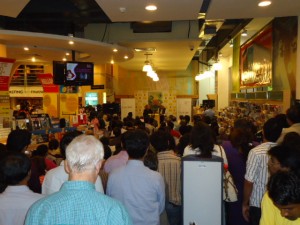
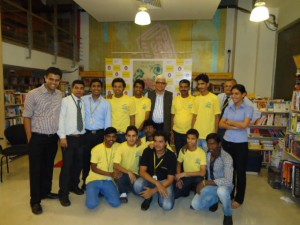 As for the Crosswords’ sales team they bring to their jobs the enthusiasm of a football team.
As for the Crosswords’ sales team they bring to their jobs the enthusiasm of a football team.
They are all lucky to live in a city that can boast of this:
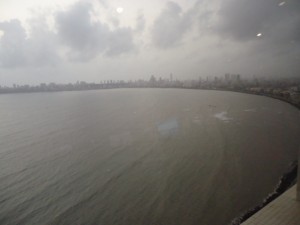

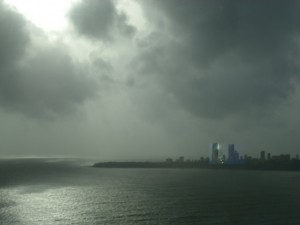
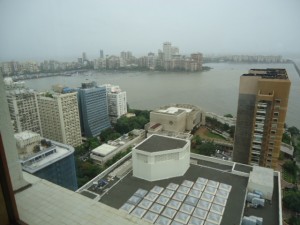
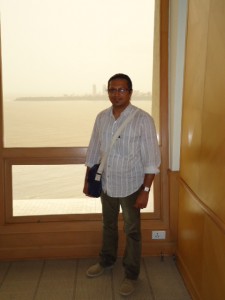

Dear Mr Ghosh, what an astonishing pleasure to read this! It’s not always that writers remember the oddball journalists they speak to. Thank you for the felicity!
I am extremely pleased and honoured to be featured here. Thanks and really appreciate it. It means a lot to me.
Nice article.
Good Work.